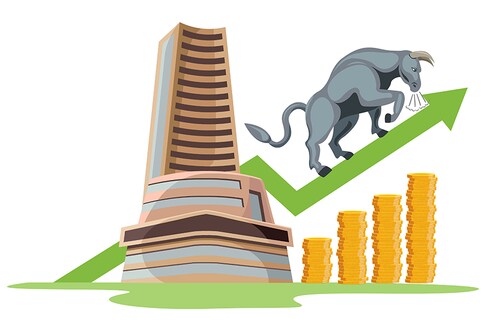Stock market investing is a marathon, not a sprint. Yet, when the BSE Sensex hits new highs—like its recent climb past 65,000—emotions often take over. From its first 1,000-point milestone to today’s heights, each record sparks excitement, but the rules of smart investing remain unchanged. Market highs are not endpoints; they’re part of a wealth-creation journey. Here are key mistakes to avoid when the market tempts you to act impulsively.
1. Don’t Fall for FOMO
The fear of missing out (FOMO) drives many to jump into a rally late, chasing perceived gains. After missing recent market surges, some investors feel pressured to act before “losing” more. But investing based on FOMO leads to irrational decisions. Instead, stick to a disciplined strategy aligned with your financial goals, not market hype.
2. Respect the Market’s Foresight
The market is a forward-looking machine, often pricing in events—like potential economic shifts or even a fourth COVID-19 wave—before they’re evident. It’s not your job to outsmart it. Trying to predict short-term movements can backfire. Focus on what you can control: your asset allocation, risk tolerance, and long-term plan. Chasing market trends often leaves you burned.
3. Avoid Meme Stocks and Hype
Meme stocks like AMC or GameStop in the US soared without solid fundamentals, driven by social media and speculation. In India, similar trends tempt investors to chase “hot” or penny stocks for quick gains. Remember: you’re investing in businesses, not headlines. Research a company’s fundamentals—revenue, earnings, and growth prospects—before committing. Choose quality over buzz.
4. Don’t Blindly Follow Warren Buffett
Warren Buffett’s wisdom is invaluable, but his strategies don’t always suit retail investors. His quip that “diversification is for the ignorant” applies to experts who can meticulously pick stocks. For most, a concentrated portfolio of just a few stocks is risky. Buffett himself advises retail investors to opt for low-cost index funds and diversify across assets like mutual funds, real estate, gold, or fixed-income options like PPF or NPS, based on your risk profile and goals.
Unlike Buffett, who can buy entire companies, you need a balanced portfolio to mitigate risk. Tailor your investments to your timeline and aspirations, not his playbook.
5. Stop Chasing Price Extremes
Trying to time the market by buying at the “bottom” or selling at the “top” is a fool’s errand. Focus on value, not price. As Buffett says, “Price is what you pay; value is what you get.” Evaluate a company’s long-term potential—its business model, competitive edge, and growth prospects—over a three-to-five-year horizon, not the next few months. Ignore short-term noise like RBI policy changes or daily market swings.
6. Limit Speculative Trading
The allure of quick profits through day trading is strong, especially with more time at home. But trading with your entire portfolio is reckless. If you’re tempted, set aside a small “fun-burn” fund—2-5% of your savings—that you can afford to lose. Treat it like a casino budget, keeping your core investments safe for long-term growth.
7. Spread Your Investments
Investing a lump sum at market highs can be risky. Instead, use a staggered approach. For example, if you have Rs10 lakh to invest, spread it over 6-12 months via SIPs or tranches. This dollar-cost averaging reduces the risk of buying at a peak and smooths out market volatility.
Stay Disciplined for Long-Term Success
Market highs, like the Sensex crossing 65,000, are milestones, not signals to act rashly. Avoid emotional traps, focus on fundamentals, and align your investments with your goals. By diversifying, ignoring hype, and staying patient, you’ll harness the market’s potential for lasting wealth creation. Let the market’s drama unfold while you stick to a steady, thoughtful strategy.

